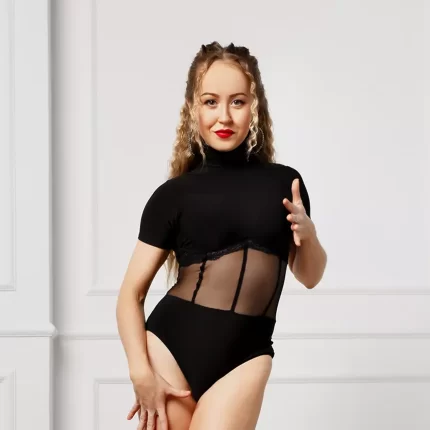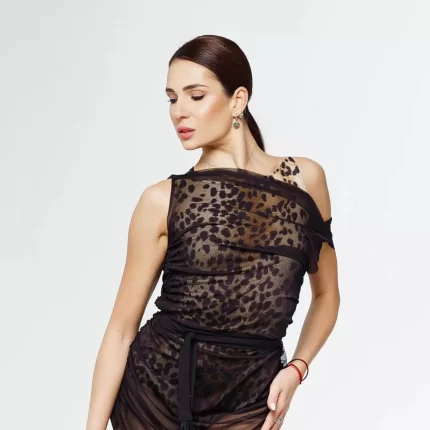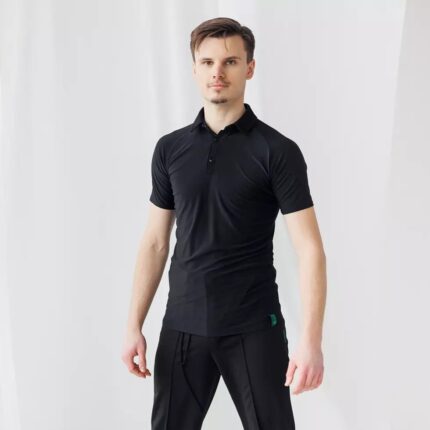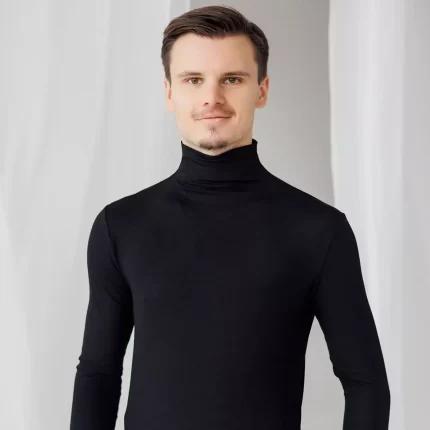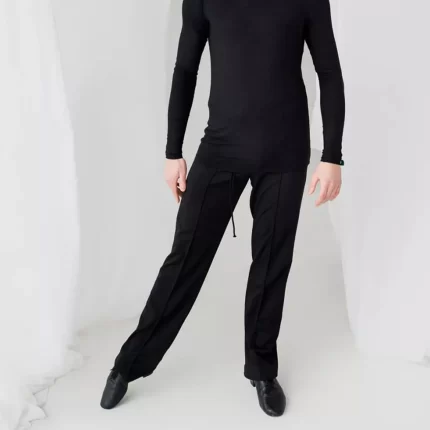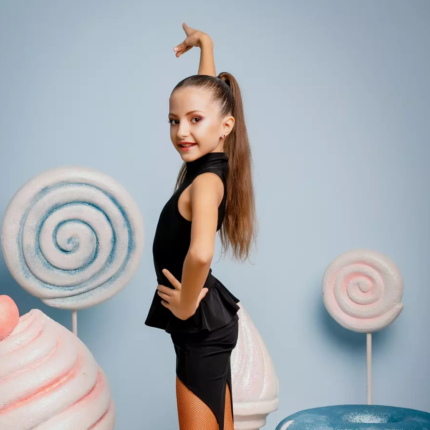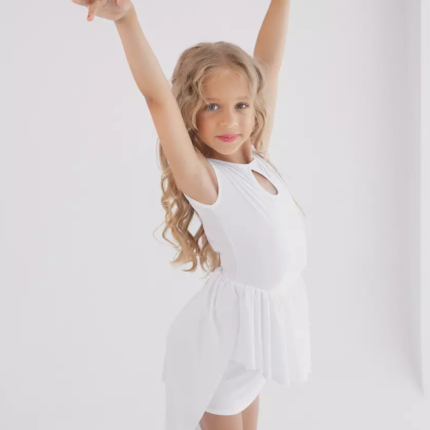Table of Contents
Introduction
Hello again, dancers and dance parents! Anna Babiy here, owner of Fashion Dance, and I’m thrilled to be talking about dance pants today. Because, let’s face it, while leotards and shorts often get a lot of attention, the right pair of pants can be a game-changer in the studio. We’re focusing on kids dance pants, or as some might say, dance pants for kids, and believe me, the options are as diverse as the world of dance itself!
We’re not just talking about any old trousers here. We’re talking about garments designed specifically for the demands of dance, offering both comfortable dance pants and stylish dancewear options. This is children’s dance apparel that’s built to move, to breathe, and to help your young dancer feel confident and ready to take on any challenge. From the sleek lines of jazz pants to the relaxed comfort of joggers, there’s a perfect pair of dance pants out there for every child and every style. So, let’s dive in and explore the wonderful world of dance pants – a world where comfort meets style, and where freedom of movement is always the top priority!
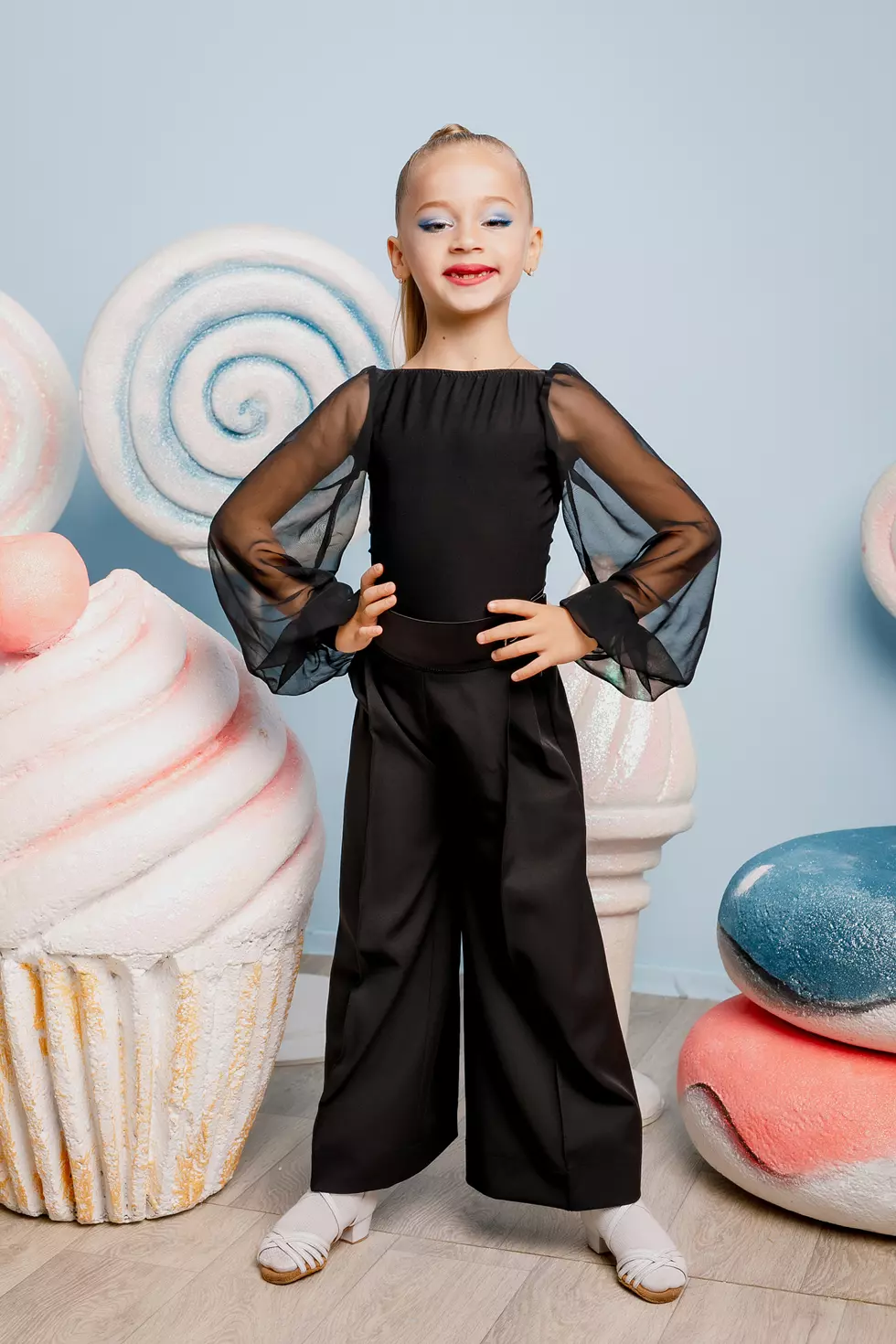
Section 1: Variety of Dance Pant Styles
Alright, let’s get down to business! So, we’ve established that dance pants are a must-have for any young dancer. But… which ones? Oh, the choices! It can feel a bit like stepping into a dancewear wonderland, can’t it? There are so many different styles out there, each with its own unique look and feel. But don’t fret! I am here to help.
Think of this section as your personal tour guide through the landscape of dance pant styles. We’re going to break it down, nice and easy, exploring the most common types you’ll encounter. From the classic jazz pant to the comfy jogger, and even the versatile legging, we’ll cover the main options. And, of course, I’ll share some insights, gathered from years of experience (both on the dance floor and in the business!), on which styles tend to work best for different dance genres. So, take a deep breath, and let’s start exploring the wonderful variety of dance pant styles!
Subsection 1.1: Jazz Pants
Okay, let’s start with a true classic: jazz pants! These are, arguably, the quintessential dance pants, the ones that immediately spring to mind when you think of traditional dancewear. Form-fitting dance pants, typically made from a stretchy, breathable fabric like a Lycra blend, jazz pants are designed to hug the body while allowing for a full range of movement.
The most defining characteristic of jazz pants is their leg style. You’ll typically find them in one of two variations: bootcut or flared leg. The bootcut style is slightly wider from the knee down, designed to fit comfortably over dance shoes. The flared leg is even wider, creating a more dramatic silhouette.
Here’s what makes jazz pants so popular:
- Form-Fitting: They hug the body, showcasing the lines of the legs and allowing instructors to clearly see the dancer’s technique.
- Stretchy and Comfortable: The fabric is designed to move with the dancer, providing comfort and unrestricted movement.
- Classic Dance Style: They’re a timeless choice, suitable for a wide range of dance genres, not just jazz! You’ll see them in tap, lyrical, and even some contemporary classes.
- Flattering Silhouette: The bootcut or flared leg can create a flattering, elongated look.
- Variety of colors Jazz pants are presented in a wide variety of colors, so it is easy to find the best combination.
While they might not be the only option for jazz dance (leggings are also a popular choice), jazz pants remain a firm favorite, and for good reason. They’re a versatile, stylish, and comfortable choice that has stood the test of time. They’re a true staple in the dancewear world, and a great starting point for any young dancer.
Subsection 1.2: Leggings
Now, let’s talk about a dancewear staple that has exploded in popularity in recent years: dance leggings! These are, essentially, the ultimate in versatility. Versatile dance pants that are known, first and foremost, for being incredibly comfortable and stretchy. While they might not have the traditional “dance pant” look of jazz pants, leggings have become a go-to choice for dancers of all ages and styles.
Leggings are typically made from a blend of Lycra/spandex and other materials like cotton or nylon, creating a fabric that’s both supportive and breathable. They hug the body from waist to ankle, providing a streamlined silhouette and allowing for unrestricted movement.
Here’s why leggings are so beloved in the dance world:
- Ultimate Comfort: They’re so comfortable! The stretchy fabric feels like a second skin, allowing for complete freedom of movement.
- Versatility: They can be worn for almost any dance style, from ballet to jazz to contemporary to hip-hop. They’re a true all-rounder.
- Layering Option: They’re perfect for layering under skirts, dresses, or even shorts, providing added warmth and coverage.
- Wide Range of Colors and Patterns: You can find leggings in just about any color or pattern imaginable, allowing for plenty of personal expression.
- Easy Care: They’re typically easy to care for, machine washable, and quick-drying.
So, while they might not have that classic “jazz pant” flair, leggings offer an unbeatable combination of comfort, versatility, and style. They’re a practical and affordable choice that’s perfect for dancers of all levels, and they’ve definitely earned their place as a modern dancewear essential. It is very important to make sure, that fabric is not see-through.
Subsection 1.3: Sweatpants and Joggers
Okay, let’s move on to the relaxed end of the dance pant spectrum: dance sweatpants and joggers for dance! These are the epitome of comfort, offering a loose-fitting dance pants option that’s perfect for certain dance styles, and, of course, for warming up before any class.
Unlike jazz pants or leggings, which are designed to hug the body, sweatpants and joggers are all about loose, unrestricted movement. They’re typically made from soft, breathable fabrics like cotton blends or fleece, and they often feature an elastic waistband and cuffs for a comfortable, secure fit.
Here’s what you need to know about sweatpants and joggers in the dance world:
- Loose-Fitting: This is the key characteristic. They allow for maximum freedom of movement, without any restriction.
- Often Used in Hip-Hop: You’ll see them everywhere in hip-hop classes, where that loose, relaxed style is part of the aesthetic.
- Ideal for Warm-ups: They’re perfect for wearing over leotards and tights before class, or during warm-up exercises, to keep muscles warm and prevent injuries.
- Comfort is King: They’re incredibly comfortable, making them a great choice for younger dancers or for those who simply prefer a more relaxed fit.
- Streetwear-Inspired Style: They often have a casual, streetwear-inspired look, which appeals to many dancers.
While they might not be suitable for all dance genres (you wouldn’t typically wear them in a ballet class, for example), sweatpants and joggers offer a valuable alternative for dancers who prioritize comfort and freedom of movement. They’re a testament to the fact that dancewear can be both practical and stylish, and that there’s a perfect pair of pants out there for every dancer and every preference.
Subsection 1.4: Capri Pants
And finally, let’s talk about a style that offers a happy medium between full-length pants and shorts: capri dance pants! These are, essentially, cropped dance pants that typically end somewhere between the knee and the ankle. They offer a comfortable and stylish option, particularly well-suited to warmer weather option or for dancers who simply prefer a shorter length.
Capri pants can be made from a variety of fabrics, from stretchy Lycra blends to softer cotton blends. They can be form-fitting, like leggings, or slightly looser, offering a bit more room to move.
Here’s what makes capri pants a popular choice:
- Cropped Length: This is the defining feature. They offer more coverage than shorts, but are cooler and less restrictive than full-length pants.
- Versatility: They can be worn for a variety of dance styles, including jazz, contemporary, and even some ballet (as warm-up attire).
- Comfortable and Stylish: They offer a good balance of comfort and style, making them a popular choice for both practice and performance.
- Warmer Weather Friendly: They’re a great option for warmer weather, or for dancers who tend to overheat easily.
- Showcase Footwork: The cropped length allows for the ankles and feet to be seen, which can be important in certain dance styles.
- Wide variety of colors: Just like with leggings and jazz pants, it is very easy to find any color.
So, if you’re looking for something that’s a bit more than shorts, but not quite as long as full-length pants, capri pants might be the perfect solution. They offer a stylish and practical alternative, providing comfort, freedom of movement, and a touch of flair. They’re a testament to the fact that dancewear is constantly evolving, offering dancers more and more choices to suit their individual needs and preferences.
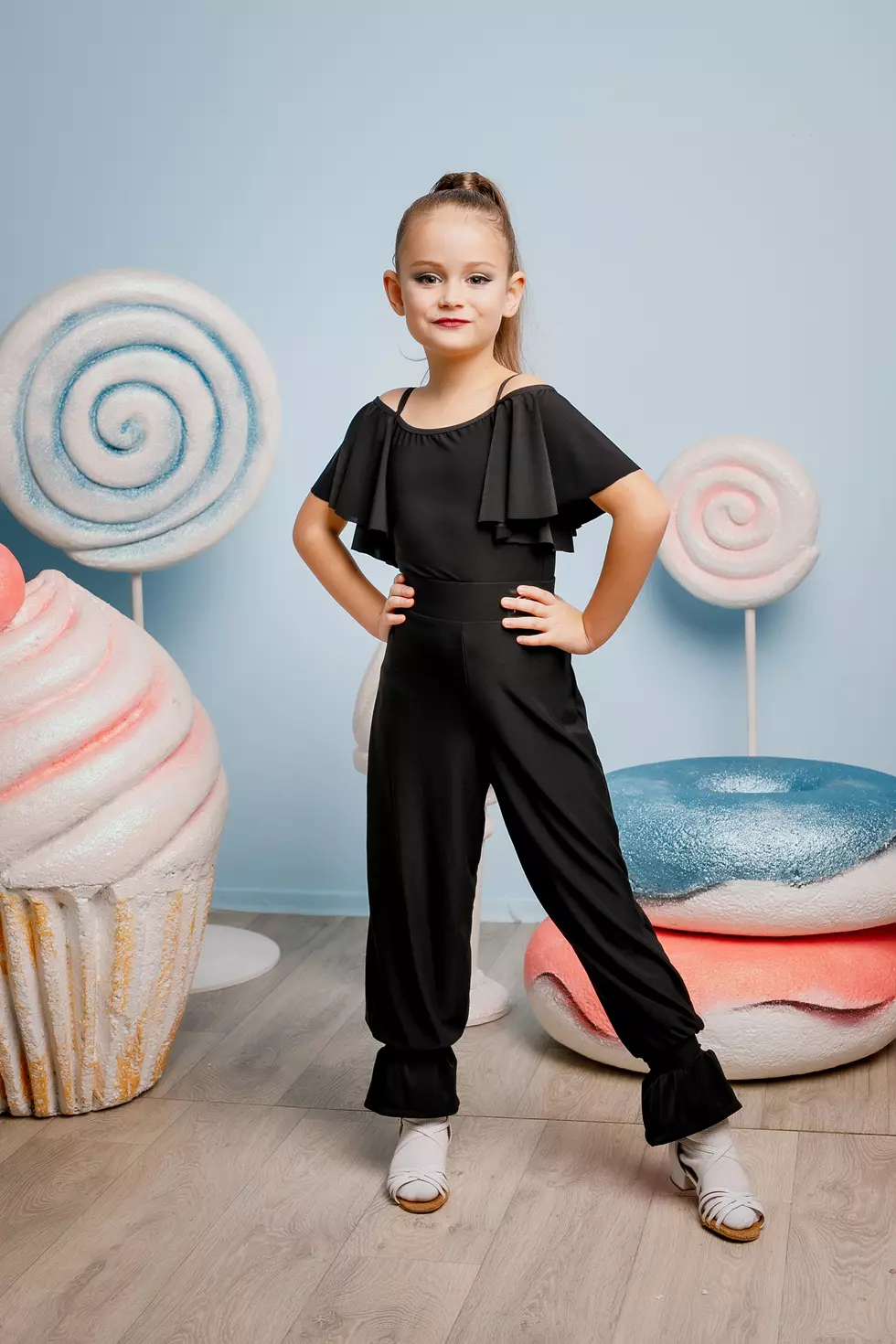
Section 2: Fabric and Fit: Ensuring Comfort and Performance
Right, we’ve explored the wonderful variety of dance pant styles. Now, let’s get down to the nitty-gritty! Because, let’s be honest, even the most stylish pair of dance pants won’t be much use if they’re uncomfortable, restrictive, or just plain don’t perform well in the studio. After 12 years in this business, and a lifetime of dancing, I can tell you that fabric and fit are just as important as style – if not more so!
This section is all about the practical considerations that go into choosing dance pants that will keep your young dancer comfortable, confident, and able to move freely. We’re talking about breathability, moisture-wicking properties, stretch, and, of course, finding that perfect fit. Because, believe me, nothing ruins a dance class faster than pants that are digging in, riding up, or restricting movement! So, let’s dive into the details of fabric and fit, and make sure your dancer is ready to shine!
Subsection 2.1: Breathable and Moisture-Wicking Materials
Okay, let’s talk about something crucial for any dancer: sweat! Because, let’s face it, dancing is hard work. Whether it’s a gentle ballet class or a high-energy hip-hop routine, your young dancer is going to sweat. And pants that don’t breathe? Well, that’s just a recipe for discomfort, stickiness, and a generally unpleasant (and potentially distracting) experience. That’s why choosing pants made from breathable fabrics and moisture-wicking dancewear materials is absolutely essential.
What do I mean by “breathable” and “moisture-wicking”? I mean fabrics that allow air to circulate, and that draw moisture away from the skin, helping it evaporate quickly. This helps to regulate body temperature, keeping cool and dry and much more comfortable, even during intense activity. This is not something to compromise on!
So, which fabrics are the stars of the show when it comes to breathability and moisture-wicking? Let’s take a look:
- Cotton: Good old cotton! It’s soft, comfortable, and naturally breathable. However, it can hold onto moisture a bit more than some synthetic fabrics, so it’s often blended with other materials for dancewear. A cotton blend is often a great choice for younger dancers or those with sensitive skin.
- Lycra/Spandex: These are the magic ingredients that give dance pants their stretch and recovery (that “bounce back” quality). Lycra and spandex are essentially the same thing (just different brand names), and they’re essential for allowing a full range of movement. They also tend to be quite good at wicking away moisture.
- Polyester: A synthetic fabric known for its durability, wrinkle resistance, and moisture-wicking properties. It’s often blended with cotton or Lycra for added comfort and stretch.
- Supplex Nylon: This is a specially engineered type of nylon that’s designed to feel soft and cottony, while still offering excellent breathability and moisture-wicking capabilities.
- Mesh: Usually used for inserts.
You’ll often find dance pants made from a blend of these fabrics, combining the best qualities of each. For example, a cotton-Lycra blend offers the softness and breathability of cotton, with the stretch and moisture-wicking properties of Lycra. The key is to look for fabrics that are specifically designed for athletic wear, as these will typically offer the best performance in terms of breathability and moisture management. Read the labels, do your research, and prioritize fabrics that will keep your young dancer feeling fresh and comfortable, even when they’re working up a sweat!
Subsection 2.2: Choosing the Right Fit
Alright, we’ve conquered the fabric conundrum, now let’s move on to fit! Because even the most breathable, moisture-wicking pants won’t be of much use if they’re too tight, too loose, or simply don’t allow for a full range of motion. Choosing the right fit of dance pants, is all about, allowing for full range of motion, and avoiding restrictions. Finding that comfortable fit, with a secure waistband, is absolutely essential for allowing your young dancer to move freely, confidently, and without any distractions.
Here’s what to keep in mind when selecting the correct size and fit:
- Snug, But Not Tight (For Fitted Styles): For leggings, jazz pants, or fitted capri pants, the fit should be snug against the body, without any gaping or looseness. But they shouldn’t be so tight that they restrict movement, dig into the skin, or create visible lines. You should be able to pinch a small amount of fabric, but not a handful.
- Loose, But Not Baggy (For Loose Styles): For sweatpants or joggers, the fit should be loose and relaxed, allowing for plenty of movement. But they shouldn’t be so baggy that they become a tripping hazard or interfere with the dancer’s movements.
- Secure Waistband: The waistband is crucial! It should be snug enough to keep the pants securely in place, without being so tight that it’s uncomfortable or restrictive. A wide, elastic waistband is often a good choice, as it distributes pressure evenly. A drawstring can also provide added adjustability.
- Leg Openings (For Fitted Styles): For leggings or jazz pants, the leg openings should be snug enough to stay in place, but not so tight that they cut off circulation.
- Length: The length will depend on the style of pants (full-length, capri, etc.). Make sure the length is appropriate for the dance style and doesn’t create a tripping hazard.
- Consider Growth: Kids grow quickly! It’s often a good idea to buy dance pants with a little bit of growing room, as long as it doesn’t compromise the fit too much.
The best way to ensure a good fit is to measure your dancer’s waist, hips, and inseam, and compare those measurements to the size chart provided by the manufacturer. Don’t just rely on their usual clothing size, as dancewear sizing can sometimes be different. And, if possible, have your dancer try on the pants and move around in them – do some stretches, some kicks, some dance moves – to make sure they’re comfortable and allow for a full range of motion. A well-fitting pair of dance pants is an investment in their comfort, their confidence, and their overall dance experience!
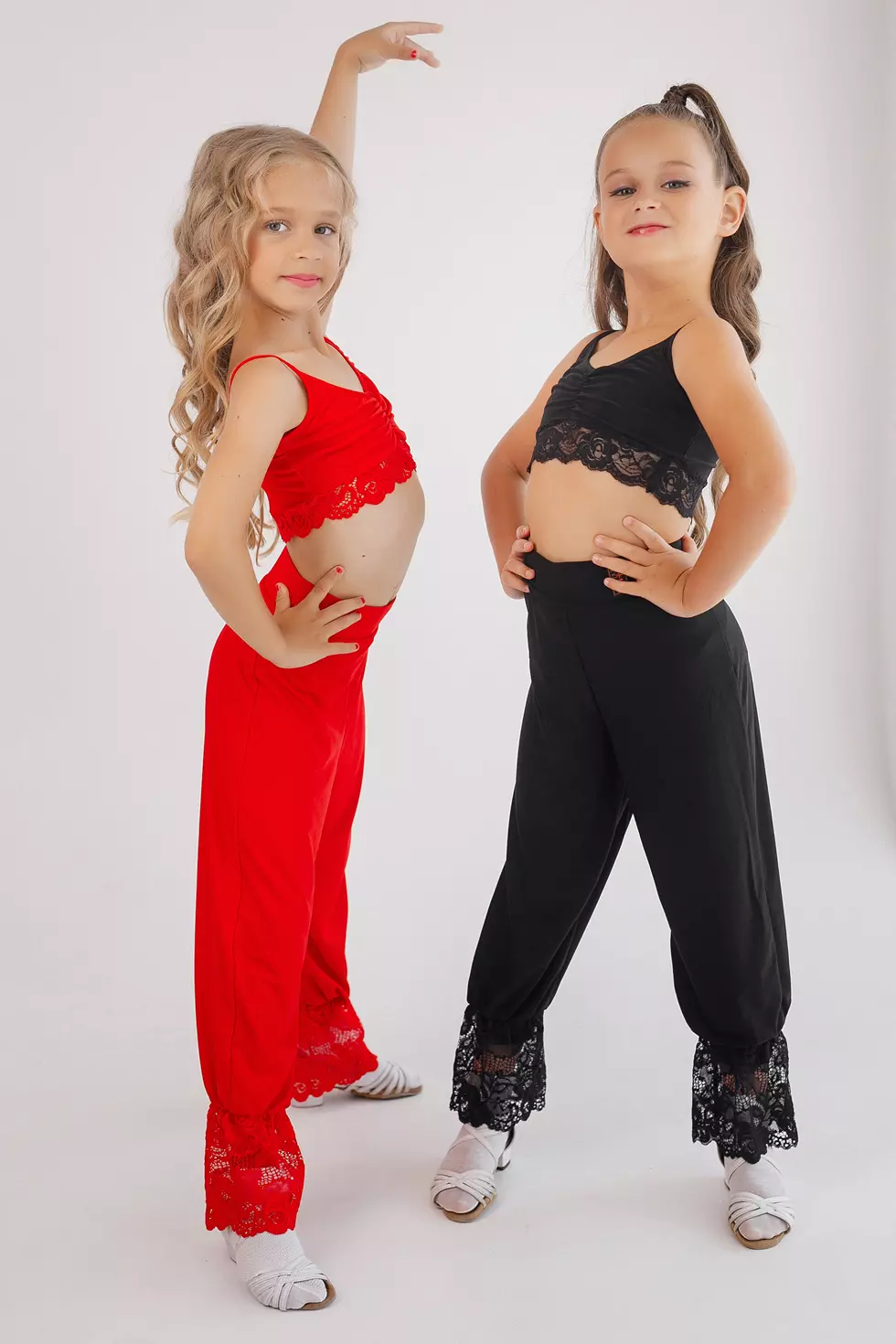
Section 3: Dance Pants for Different Dance Genres
Okay, we’ve covered the fundamentals of dance pants – the styles, the fabrics, the all-important fit. Now, let’s get a bit more specific! Because, while a pair of leggings might technically work for any dance style, certain types of pants are more commonly associated with certain genres. And there are usually very good reasons for that!
This section is all about exploring the unwritten (and sometimes written!) rules of dancewear across different disciplines. We’ll look at which types of pants tend to be favored in jazz, tap, hip-hop, and ballet (as warm-up attire), and why. Think of it as your insider’s guide to navigating the sometimes-confusing world of dance studio attire. Now, I’m a firm believer in personal expression, so I’m not saying you have to follow these conventions! But understanding them can certainly help you make informed choices, and ensure your young dancer feels comfortable, confident, and appropriately dressed for their class. So, let’s take a little tour of the dance world, one pair of pants at a time!
Subsection 3.1: Jazz and Tap Dance Pants
Alright, let’s kick things off with jazz and tap! These two dance styles, while distinct, often share similar preferences when it comes to pants. Both genres emphasize precise movements, rhythmic footwork, and showcasing the lines of the legs. Therefore, jazz dance pants and tap dance pants tend to have a lot in common. Form-fitting styles are favored, allowing instructors (and audiences) to clearly see the dancer’s technique, especially, showcasing leg lines and footwork.
Here’s what you’ll typically find in a jazz or tap class:
- Jazz Pants: These are, of course, a classic choice for both jazz and tap. The form-fitting design and bootcut or flared leg showcase the lines of the legs and allow for a full range of movement.
- Leggings: Leggings have become increasingly popular in both jazz and tap, offering a comfortable and versatile alternative to traditional jazz pants.
- Fitted Capri Pants: These can also be a good option, particularly in warmer weather, providing more coverage than shorts while still allowing for the ankles and feet to be seen.
- Dark Colors: While there’s more flexibility these days, jazz and tap pants often tend to be in darker colors like black, navy, or charcoal gray. This helps to create a clean, streamlined look and doesn’t distract from the dancer’s movements.
The overall aesthetic is one of sleekness, precision, and functionality. The pants are there to support the dancer’s movements, to allow for a full range of motion, and to highlight the lines of the legs and the intricate footwork that are characteristic of these styles. So, while there’s always room for individual expression, these guidelines can help you choose pants that are both stylish and appropriate for jazz and tap dance.
Subsection 3.2: Ballet Warm-up Pants
And finally, let’s touch on ballet… and pants! Now, as I mentioned before, you won’t typically see dancers in pants during a formal ballet class. Traditional ballet attire emphasizes tights and leotards, allowing for precise movements and showcasing the lines of the body.
However, there is a place for pants in the ballet world: as ballet warm-up pants. These are designed to be worn over tights, providing added warmth during the initial stages of class, before the muscles are fully warmed up. They offer layering over tights, and are providing comfortable fit.
Here’s what you need to know about ballet warm-up pants:
- Worn Over Tights: This is the key point. They’re not meant to replace tights, but rather to provide an extra layer of warmth.
- Loose or Fitted Styles: Both loose-fitting sweatpants/joggers and fitted leggings or knit pants can be used as warm-up attire. The choice often depends on personal preference.
- Soft, Breathable Fabrics: Comfort is paramount, so warm-up pants are typically made from soft, breathable fabrics like cotton blends, fleece, or lightweight knits.
- Easy to Remove: They should be easy to pull on and off over tights, without disrupting the dancer’s warm-up routine.
- Neutral Colors: Unlike hip-hop pants, ballet warm-up pants tend to be in neutral colors like black, gray, pink, or white, to maintain the traditional ballet aesthetic.
- Knit pants: Those can be with a stirrup, or without it.
Think of warm-up pants as a cozy, practical addition to the ballet wardrobe, providing that essential extra layer of warmth to prevent injuries and keep muscles supple. They’re not about making a fashion statement; they’re simply about supporting the dancer’s preparation for class. So, while you might not see them throughout the entire class, ballet warm-up pants play a valuable role in a dancer’s routine.
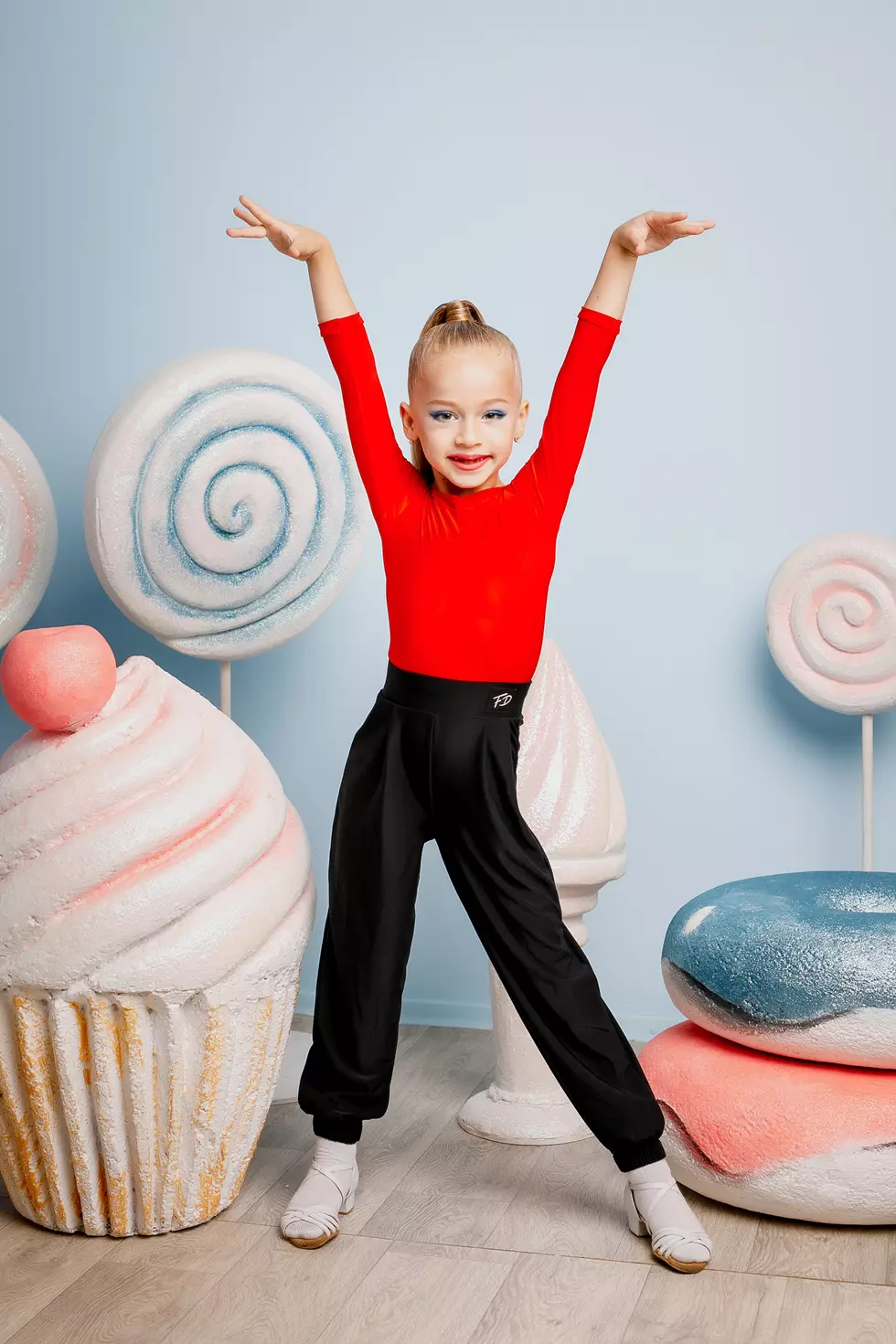
Section 4: Finding the Perfect Pair of Dance Pants
Right! We’ve explored styles, fabrics, fit, and even the unwritten rules of different dance genres. You’re practically a dance pants expert at this point! But… where do you actually find these essential pieces of dancewear? Well, that’s precisely what this section is all about. Because, let’s be honest, the search for that perfect pair of dance pants can sometimes feel like a bit of a treasure hunt!
Whether you’re a fan of the convenience of online shopping or you prefer the personalized touch of a local boutique, there are plenty of options out there. I’ll share some of my favorite resources, both online and off, and offer a few tips for navigating the sometimes-overwhelming world of dancewear retail. From specialized dancewear stores to larger online marketplaces, we’ll explore the best places to find those perfect dance pants that will keep your young dancer comfortable, confident, and ready to move! So, let the shopping begin!
Subsection 4.1: Online Dancewear Retailers
Okay, let’s start with the vast and convenient world of online shopping! Online dancewear retailers offer an incredible selection, often at competitive prices, and you can browse and buy from the comfort of your own home – what’s not to love? Online stores provide a wide selection and convenient shopping, a huge bonus for busy parents (and let’s be real, every parent is a busy parent!). The ability to comparing prices is also a very useful.
Here are the undeniable advantages of shopping online:
- Vast Inventory: Online retailers typically carry a far wider range of styles, sizes, and brands than brick-and-mortar stores. You’re much more likely to find precisely what you’re looking for, even if it’s something a bit unusual.
- Competitive Prices: Online stores often have lower overhead costs than physical shops, which can translate into lower prices for you.
- 24/7 Availability: You can shop whenever it suits you, day or night, without having to leave the house. A major advantage for time-crunched families.
- Customer Reviews: Many online retailers feature customer reviews, which can be incredibly helpful in assessing the quality, fit, and overall satisfaction with a particular pair of pants.
- Detailed Size Charts: Reputable online dancewear sellers provide comprehensive size charts, often with specific measurements for each garment. This helps you choose the right size and minimizes the risk of returns.
However, there are a few things to keep in mind:
- No Try-Ons: This is the main drawback. You’re relying on size charts and reviews, and there’s always a chance the pants won’t fit perfectly.
- Shipping & Returns: Factor in shipping costs when comparing prices, and always check the retailer’s return policy before you buy.
- Check seller: Make sure you are buying from a trusted seller.
Do your research, read those reviews, compare prices, and don’t hesitate to contact the retailer’s customer service if you have any questions. A good online store will be more than happy to assist!
Conclusion
And there you have it! We’ve journeyed through the world of kids’ dance pants, exploring everything from the classic jazz pant to the comfy jogger, the versatile legging to the breezy capri. We’ve delved into fabrics, fit, and how different styles align with various dance genres. Hopefully, you now feel much more confident about choosing the right dance pants – ones that are both comfortable and stylish options, ultimately supporting young dancers’ passion for movement.
Remember, the perfect pair of dance pants is more than just a piece of clothing; it’s an essential tool that empowers your dancer to move freely, express themselves, and feel confident in the studio. It’s about finding that ideal balance between practicality, style, and that all-important freedom of movement. Whether it’s the sleek lines of jazz pants for a tap routine, the loose comfort of joggers for hip-hop, or the versatility of leggings for just about anything, the goal is to find pants that help your dancer shine.
Don’t be afraid to experiment, to try different styles, and to let your dancer’s personality and the specific demands of their chosen dance form guide your choices. And above all, remember that the best pants are the ones that make your dancer feel comfortable, confident, and ready to take on any challenge, one step, leap, or plié at a time. Because that’s what it’s all about, isn’t it? Nurturing that love of dance and providing the support they need to flourish.
Looking for more information on kids’ dancewear? Don’t miss our complete guide: Kids Dancewear: A Guide to Finding the Perfect Fit and Style
1. What are some strategies for finding affordable kids’ dance pants without sacrificing quality?
Finding affordable kids’ dance pants without sacrificing quality requires a strategic approach. You can start by shopping sales and clearance events at both online and local dancewear stores. These retailers often offer significant discounts on end-of-season items or overstocked merchandise. Subscribing to email newsletters and following social media accounts of dancewear brands can alert you to exclusive promotions or flash sales.
Consider purchasing versatile pieces that can be mixed and matched. A basic black pair of leggings or jazz pants can be paired with various tops and accessories, creating multiple outfits. This approach maximizes your investment and reduces the need to purchase numerous specialized items.
Exploring consignment shops, thrift stores, and online marketplaces dedicated to dancewear or children’s clothing can yield great finds. Gently used dance pants are often available at significantly reduced prices, providing an opportunity to acquire high-quality items for less. Check the condition carefully for any signs of wear and tear, such as holes, stains, or stretched-out elastic.
When possible, prioritize quality over quantity. Investing in a few well-made pairs of dance pants that will last longer is often more cost-effective than buying multiple cheaper pairs that wear out quickly. Look for durable fabrics, reinforced seams, and sturdy construction.
Taking proper care of dance pants will extend their lifespan and reduce the need for frequent replacements. Follow the care instructions on the label, such as washing in cold water and air-drying. Repairing minor damages, such as loose seams or hems, can also prolong the usefulness of the garment.
By employing these strategies, you can build a functional and affordable dance pant wardrobe for your child without compromising on quality or style. It’s all about being a smart shopper, doing your research, and prioritizing value over flashy trends.
2. What are the key safety features to look for in dance pants, especially for younger children?
When selecting dance pants for young children, safety should be a top priority. Comfort and freedom of movement are essential, but certain design features can further enhance safety and prevent potential hazards.
Proper Fit: Dance pants that are too long can create a tripping hazard, particularly for younger children who may not have fully developed their coordination. Ensure that the pants are hemmed to the appropriate length or opt for styles with elasticized cuffs that can be adjusted. The waistband should fit snugly but comfortably, without being too tight or restrictive. A too-tight waistband can restrict breathing or cause discomfort, while a too-loose waistband can cause the pants to slip down during movement.
Secure Fastenings: Avoid dance pants with dangling drawstrings or excessively long ties, as these can pose a strangulation or tripping hazard. Opt for pants with elastic waistbands or secure, low-profile drawstrings that can be tied or tucked away.
Non-Slip Fabric: Choose dance pants made from fabrics that provide good traction on the dance floor, such as cotton blends or fabrics with a textured surface. Avoid slippery fabrics like silk or satin, which can increase the risk of slips and falls.
Breathability: Opt for dance pants made from breathable, moisture-wicking fabrics that will help regulate your child’s body temperature and prevent overheating. Overheating can lead to dizziness, fatigue, and decreased coordination.
Minimal Embellishments: Avoid dance pants with excessive embellishments, such as sequins, beads, or rhinestones, especially in areas where they could come into contact with the floor or other dancers. Loose embellishments can create a tripping hazard and can also be a choking hazard for very young children.
Good Visibility: If your child dances in a dimly lit studio or on a stage with low lighting, consider dance pants in brighter colors or with reflective accents to improve visibility. This can help prevent collisions with other dancers.
Age-Appropriate Styles: When choosing dance shorts for younger children, it’s generally best to avoid styles that are too revealing or too mature. Opt for comfortable, modest styles that allow for full range of movement without drawing undue attention.
By carefully considering these safety features, you can help ensure that your child’s dance practice is both enjoyable and safe. When in doubt, consult with your child’s dance instructor for recommendations on appropriate and safe attire.
3. How do I adapt dance pants for a dancer who has sensory sensitivities (e.g., tags, seams)?
Adapting dance pants for a dancer who has sensory sensitivities requires careful consideration of the fabrics, fit, and construction of the garment. Here’s how to minimize potential sources of discomfort and create a more sensory-friendly dance experience:
Tags: The first step is to remove any tags from the inside of the dance pants. Use a seam ripper to carefully remove the tag without damaging the fabric. If you’re concerned about damaging the garment, you can also try cutting off the tag as close to the seam as possible, but be sure to leave enough fabric to prevent unraveling. Alternatively, some brands offer tagless leotards with heat-transferred labels or printed information directly onto the fabric.
Seams: Seams can be a major source of irritation for those with sensory sensitivities. Look for dance pants with flatlock seams, which lie flat against the skin and minimize friction and rubbing. If the seams are still bothersome, you can try turning the pants inside out so the seams are on the outside. You can also try covering the seams with soft fabric tape or moleskin to create a smoother surface against the skin.
Fabric Choice: Opt for soft, natural fabrics like organic cotton, bamboo, or modal, which are known for their gentle feel against the skin. Avoid fabrics that are scratchy, stiff, or have a rough texture. Knit fabrics, such as jersey, tend to be softer and more comfortable than woven fabrics.
Fit: Ensure that the dance pants are not too tight or constricting. A snug but not overly compressive fit will allow for freedom of movement without causing irritation. Avoid pants with elastic waistbands that are too tight or dig into the skin. Look for styles with wide, soft waistbands or drawstring closures that allow for a more customized and comfortable fit.
Construction: Look for dance pants with minimal embellishments or details that could cause irritation. Avoid styles with zippers, buttons, or snaps that might rub against the skin. Check for any loose threads or rough edges that could snag or scratch.
Washing: Wash new dance pants before wearing them to remove any residual chemicals from the manufacturing process. Use a fragrance-free, dye-free detergent specifically designed for sensitive skin. Avoid using fabric softeners, as they can leave a residue on the fabric that can irritate the skin.
By carefully considering these factors, you can create a dance pant wardrobe that is both comfortable and functional for your dancer with sensory sensitivities.
4. Are there specific dance pant styles recommended for very cold or very hot climates?
Yes, the best choice of dance pant style can definitely depend on the climate! Different styles offer varying degrees of warmth and breathability, making some better suited to very cold or very hot conditions.
For Very Cold Climates:
Fleece-Lined Leggings are a fantastic choice for extra warmth, providing an insulated layer against the cold. Thick Knit Pants Look for heavier knit pants, especially those made from wool or a wool blend. They offer excellent warmth and can be worn over tights or a leotard. Sweatpants/Joggers, Made from fleece or a thick cotton blend, these provide a loose and comfortable layer of warmth. Consider Stirrup Pants, These prevent the pants from riding up during movement, which can help to keep ankles and feet warmer.
Prioritize materials that trap warmth, without restricting movements!
For Very Hot Climates:
Capri Leggings Cropped pants are useful for these conditions. They can help give more opportunity for air flow. Loose-Fitting Shorts: If allowed in the studio, relaxed shorts can offer more ventilation. Breathable Fabrics: Lightweight and breathable materials are key. Moisture-Wicking: This is crucial to keep sweat from being trapped near the skin. Consider Lightweight Capri Pants That balance coverage and freedom of movement.
Ultimately, comfort and freedom of movement are the most important factors. Choose dance pants that allow your child to move freely and comfortably, while also regulating their body temperature to prevent overheating or feeling chilled. Pay attention to the fabric composition and select materials that are appropriate for the climate and the intensity of the dance activity.
5. My child is interested in a unique dance style. What types of resources can I use to research appropriate dance pant styles?
When your child is exploring a less common or unique dance style, researching appropriate attire, particularly dance pant styles, can require a bit more digging. Here are several valuable resources you can tap into:
Online Dance Communities and Forums:
These platforms provide a wealth of information from experienced dancers and instructors. Look for forums or groups dedicated to your child’s specific dance style. Members often share advice on appropriate attire, including dance pant styles, fabrics, and fit. You can ask specific questions and receive personalized recommendations from those familiar with the dance.
Dancewear Retailer Websites and Blogs:
Many online dancewear retailers have blogs or style guides that offer advice on choosing appropriate attire for different dance styles. These resources can provide valuable insights into the latest trends and recommendations for dance pants. Look for retailers that carry a wide range of dancewear and cater to diverse dance styles.
Social Media (Instagram, Pinterest, YouTube):
Social media platforms can be a great source of visual inspiration. Search for hashtags related to your child’s dance style (e.g., #AfroDance, #BollywoodDance, #IrishDance) to see what other dancers are wearing. You can also follow dancewear brands, dance schools, or individual dancers who specialize in the style your child is interested in. YouTube can provide demonstration from experts.
Dance Instructors and Studios:
Your child’s dance instructor is an invaluable resource. They can provide specific guidance on appropriate attire for class, as well as recommendations for local dancewear stores or online retailers. Dance studios often have dress codes or guidelines that can help you choose appropriate dance pant styles.
Cultural Organizations or Experts:
For dance styles with strong cultural roots (e.g., African dance, Bollywood dance), consulting with cultural organizations or experts can provide valuable insights into traditional attire and appropriate adaptations for modern dance classes. These organizations can often provide information on where to find authentic or culturally inspired dance pants.
Dance Books and Magazines:
While less common than online resources, dance books and magazines can still offer valuable information on dance attire. Look for publications that focus on the specific dance style your child is interested in.
By utilizing these resources, you can gain a better understanding of the appropriate dance pant styles for your child’s unique dance style, ensuring they are comfortable, safe, and appropriately dressed for their classes and performances. Remember to prioritize comfort and freedom of movement, and to choose pants that make your child feel confident and inspired to dance.
